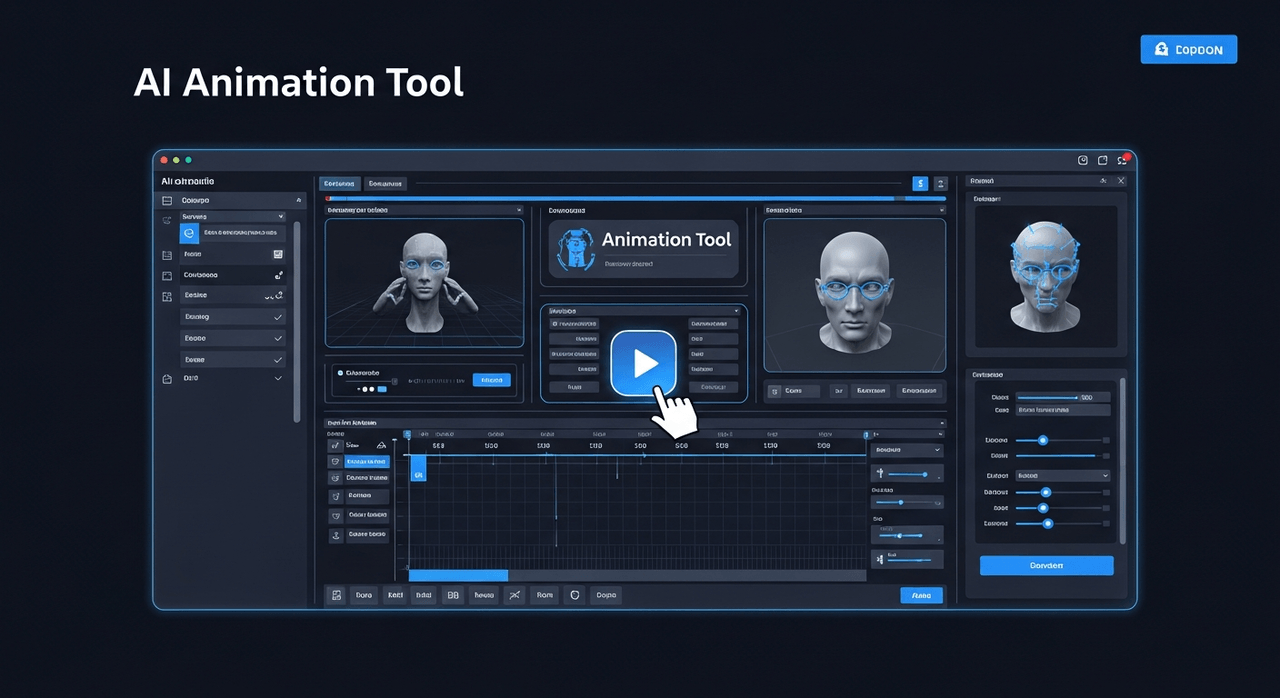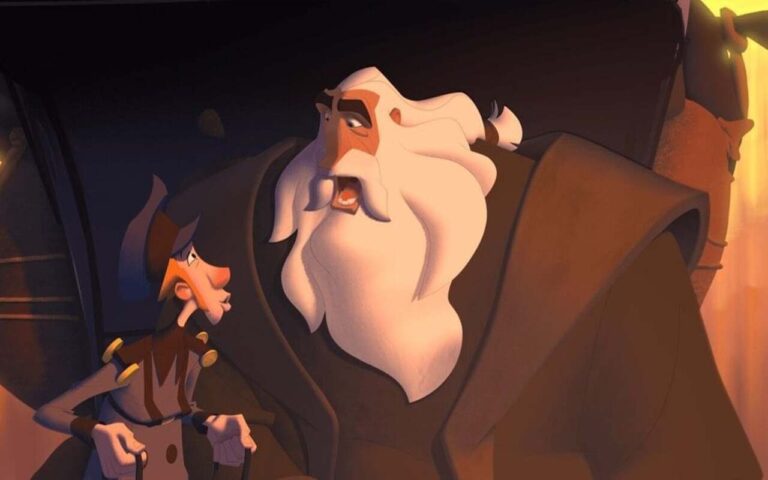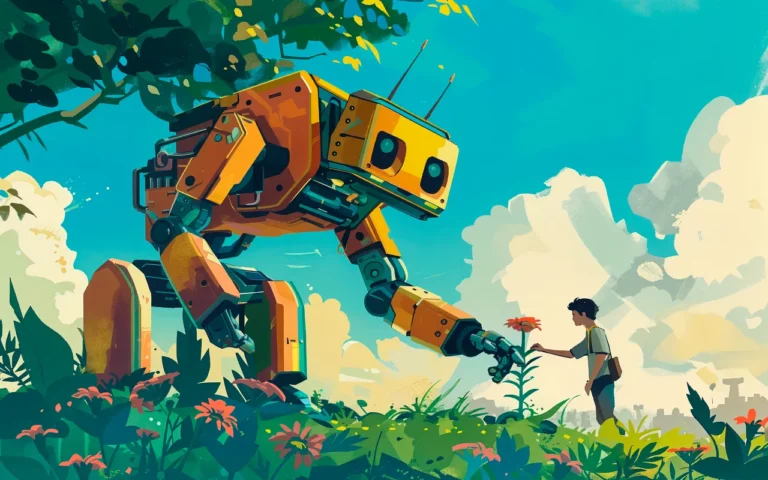In 1995, Pixar redefined animation with Toy Story, the world’s first fully computer-animated feature film.
Toy Story’s success was achieved through hard work and vision, inspiring every animation studio from then until now!
Toy Story was the cherry on top of Pixar’s success, earning admiration from both critics and audiences.
While some consider the original idea a success factor, other reasons brought this feature animation fame and fortune.
Stay with us as we explore the untold factors behind Toy Story’s success, from its captivating characters to its groundbreaking technology and strategic marketing!

Need Animation Services?
Visit our Animation Service page to see how we can help bring your ideas to life!
A Solid Foundation!
Pixar was founded in the right way! And what we mean by that is the powerhouse team of visionaries behind Toy Story:
John Lasseter, an experienced animator, brought creative storytelling to the forefront. Ed Catmull, a pioneer in computer graphics, provided technical expertise that pushed digital boundaries. Steve Jobs, with his business acumen from Apple, ensured strategic and financial stability.
This diverse combination of creativity, technology, and business savvy laid the groundwork for one of the most iconic animations ever!
Their collaboration resulted in a film that not only launched Pixar’s legacy but also stood above competitors and set “the” benchmark for animated storytelling.
A Pragmatic Approach!
Pixar’s strategic decision-making was pivotal to Toy Story’s success. Their team recognized the limitations of 1990s rendering technology, which often produced plastic-like textures, and the team chose toys as protagonists!
As John Lasseter explained, “Everything tended to look plasticky, so why not have characters made of plastic?”
This pragmatic approach leveraged the strengths of early CGI, simplifying rendering while creating visually appealing characters.
By minimizing human figures like Andy and his mother, Pixar avoided technical challenges and ensured a polished and immersive film that resonated with audiences.
Captivating Characters and Their Timeless Appeal
Toy Story’s characters are the heart of its success! This production’s character animation blends humor, relatability, and emotional depth.
Moreover, drawing lessons from the past played a crucial role in the production of Toy Story. Pixar released Tin Toy in 1988 as a short film featuring characters that were toys. It received enthusiastic approval, hinting to Pixar CEOs that toy-related ideas could open new directions.
Woody and Buzz: Iconic Duo Dynamics
Woody, a kind-hearted cowboy doll voiced by Tom Hanks, and Buzz Lightyear, an arrogant yet endearing space ranger voiced by Tim Allen, form one of animation’s most iconic duos!
The narrative of this animation centers on Andy’s toys, led by Woody (a kind cowboy doll) and Buzz Lightyear (an arrogant action figure), whose adventures in a “last-man-standing” game of loyalty and rivalry captivated audiences worldwide.
Their rivalry, sparked by Woody’s jealousy of Buzz’s arrival, grows into a profound friendship which feeds the film’s great emotional core.
The contrast between Woody’s grounded leadership and Buzz’s delusional heroism creates humor and tension, making their journey relatable and engaging.
This dynamic inspired sequels and a lasting cultural legacy, with Woody and Buzz becoming icons of Pixar’s storytelling and animation power.
Supporting Characters: How Sidekicks Elevated the Story
The supporting cast, including Rex, Slinky Dog, Hamm, and Mr. Potato Head, enriches Toy Story with humor and heart.
Rex’s anxious yet lovable demeanor, Slinky’s unwavering loyalty, and Hamm’s sarcastic wit add depth to the story, ensuring every character feels essential.
These sidekicks not only provide comic and emotional support, but also significantly elevate the main plot and appeal to diverse audiences.
Their unique personalities, crafted through meticulous character design, made Toy Story a family-friendly masterpiece that continues to charm viewers of all ages, from then to now.
Emotional Storytelling and Universal Themes
Toy Story’s storytelling goes beyond animation and weaves universal themes that resonate across generations.
Pixar did its homework before launching Toy Story!
They extensively gathered data about their audiences, including their favorite toys, playing behaviors, and numerous other details to support their new product.
The data were applied during different stages of production and also helped Toy Story creators to make more meaningful decisions.
Nostalgia and Growing Up: Resonating with All Generations
At its core, Toy Story explores the bittersweet process of growing up, as Andy’s toys face the uncertainty of their owner’s changing interests.
This theme of nostalgia taps into childhood memories and awakens a sense of longing for simpler times. Adults connect with the toys’ fear of being replaced, while children relate to the excitement of new adventures.
Pixar’s research into popular toys and play patterns ensured characters like Woody and Buzz felt familiar to amplify the film’s emotional impact and broad appeal.
Friendship and Rivalry: Core of Toy Story’s Heart
The growing relationship between Woody and Buzz showcases a blend of friendship and rivalry. Their initial conflict, rooted in jealousy and misunderstanding, transforms into a bond built on trust and loyalty.
The screenplay’s ability to balance humor, conflict, and heartfelt moments makes Toy Story a timeless story of human connection, highlighted by its universal appeal.
Innovative Animation Techniques and Technology
Toy Story’s technical achievements, which were driven by a visionary team, revolutionized animation.
John Lasseter’s animation expertise, Ed Catmull’s pioneering work in computer graphics, and Steve Jobs’ strategic oversight formed a solid foundation for Pixar’s success.
Their collective efforts made Toy Story the first fully computer-animated feature film and set new, high-achieving benchmarks for the industry.
The Challenges Pixar Overcame in 3D Animation
Creating Toy Story required overcoming significant technical hurdles. In the 1990s, rendering technology often produced plastic-like textures, and realistic lighting was difficult to achieve.
Pixar’s pragmatic approach, as articulated by Lasseter, was to embrace these limitations by making toys the main characters, as “having toys as characters really lent itself [to the software].” This decision simplified rendering while maximizing visual appeal.
The team also developed proprietary software like RenderMan to achieve lifelike visuals and address challenges like texturing and dynamic lighting to create a polished, immersive world.
How Toy Story Set New Industry Standards for CGI
As the first 3D feature film, Toy Story sparked curiosity and drew audiences to theaters, grossing over $192 million domestically.
Its pioneering use of CGI introduced smoother movements, vibrant colors, and detailed environments, surpassing traditional 2D animation.
This success lured competitors like DreamWorks and Blue Sky to adopt CGI and shift the industry away from hand-drawn techniques.
Toy Story’s technical innovations, its box office triumph, and its redefined animation standards influenced films like Shrek and Finding Nemo.
Strategic Marketing and Promotion
Disney’s partnership with Pixar was instrumental in Toy Story’s global success.
A $26 million investment from Walt Disney Pictures provided financial stability for Pixar to focus on creativity while Disney amplified the film’s reach through strategic marketing and distribution.
Disney’s Role in the Global Marketing Strategy
Disney’s marketing expertise transformed Toy Story into a global phenomenon!
Through targeted campaigns, including trailers, TV spots, and cross-promotions, Disney positioned the film as a must-see family event.
Their global distribution network promoted wide theatrical release and contributed to its massive box office success.
The initial financial support also eased budgetary concerns and allowed Pixar to prioritize quality and innovation, while Disney’s brand credibility enhanced the film’s appeal.
Merchandising Success: Toys Beyond the Screen
Toy Story’s toy-centric narrative suggested a merchandising boom. Action figures of Woody, Buzz, and supporting characters became cultural icons and soon generated significant revenue!
From clothing to video games, the merchandise extended the film’s brand, creating a self-sustaining cycle of popularity.
This synergy between the film’s story and its products established Toy Story’s presence in pop culture and boosted both Pixar’s and Disney’s profitability.
Read More: Disney Pixar Merger, More Than a Merger!
Exceptional Voice Acting and Casting Decisions
Toy Story’s voice talent brought authenticity and emotion to its characters and elevated the screenplay. Strategic casting choices ensured the toys felt alive, enhancing the film’s emotional and comedic impact.
Tom Hanks and Tim Allen: Voices Behind Legendary Characters
Tom Hanks’ warm, relatable performance as Woody and Tim Allen’s charismatic act as Buzz Lightyear defined Toy Story’s heart!
Hanks captured Woody’s loyalty and vulnerability, while Allen infused Buzz with humor and confidence.
Their chemistry made the characters unforgettable enough to create a strong sense of nostalgia for making sequels.
Importance of Voice Talent in Character Believability
Furthermore, the ensemble cast, including Jim Varney as Slinky Dog, Wallace Shawn as Rex, and Don Rickles as Mr. Potato Head, added more depth and authenticity to the experience.
Each actor’s distinct voice and delivery brought a unique personality to the toys, showing Pixar’s meticulous casting process that prioritizes emotional resonance and comedic timing.
Influence on the Animation Industry and Pop Culture
Toy Story reshaped animation and pop culture by the time it was released. On a more surprising note, it continues to influence storytelling and animation techniques, with its impact inspiring both filmmakers and audiences!
Shaping the Future of Animated Films
Toy Story proved CGI could deliver emotionally rich stories with mass appeal, inspiring films like Monsters, Inc. and Ice Age.
Its success encouraged studios to invest in CGI technology and character-driven narratives, establishing Pixar as an industry leader.
The film’s influence is evident in modern animation’s focus on technical excellence and storytelling innovation, showcasing the importance of Toy Story’s legacy as a transformative milestone.
Final Words
Toy Story’s success is not a story about getting lucky! It is a testament to Pixar’s visionary approach, blending innovative technology, compelling characters, and strategic execution.
From its foundational team and pragmatic creative choices to its universal themes and cultural impact, the film redefined animation.
Decades later, it remains a benchmark for creativity and innovation in storytelling.









